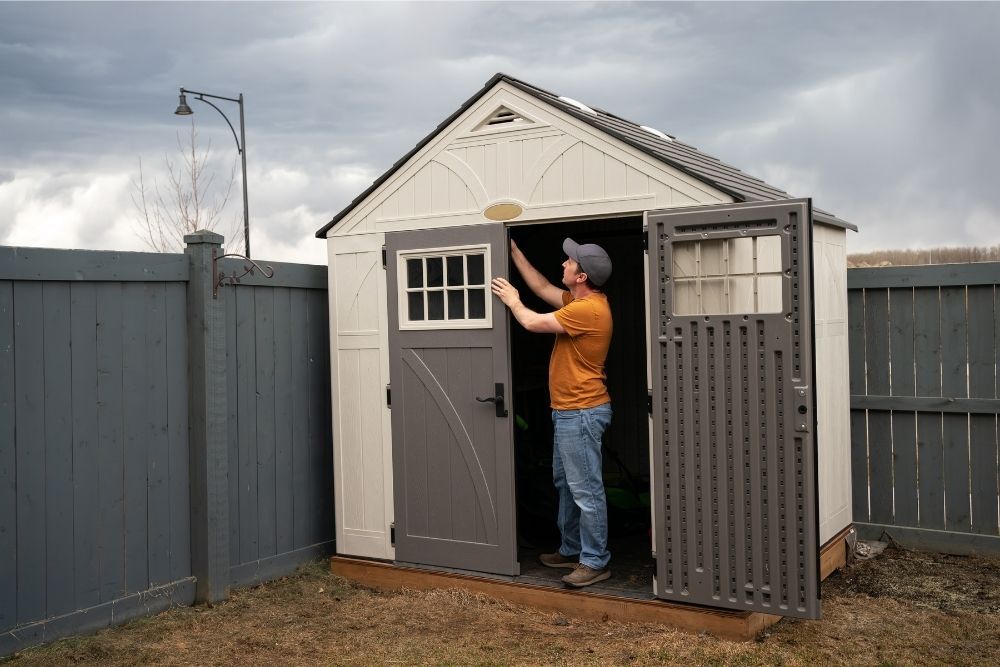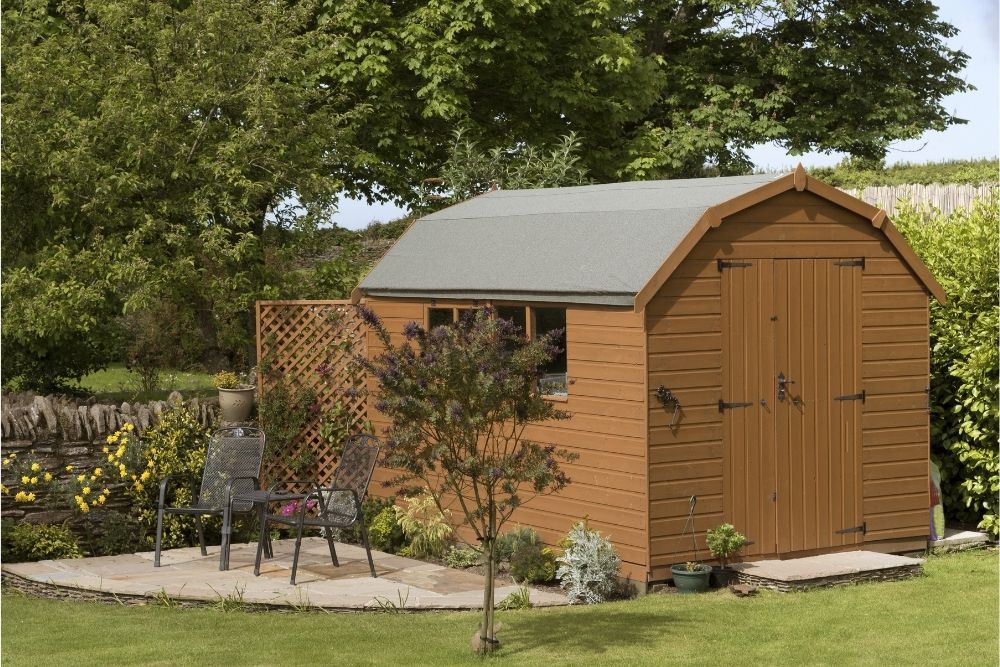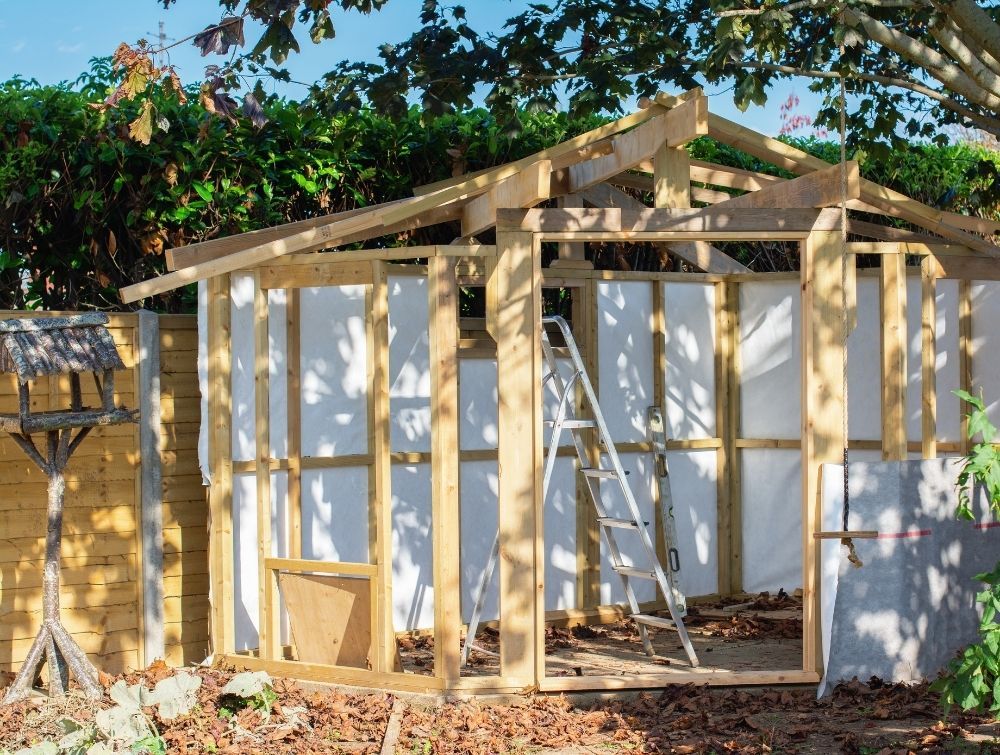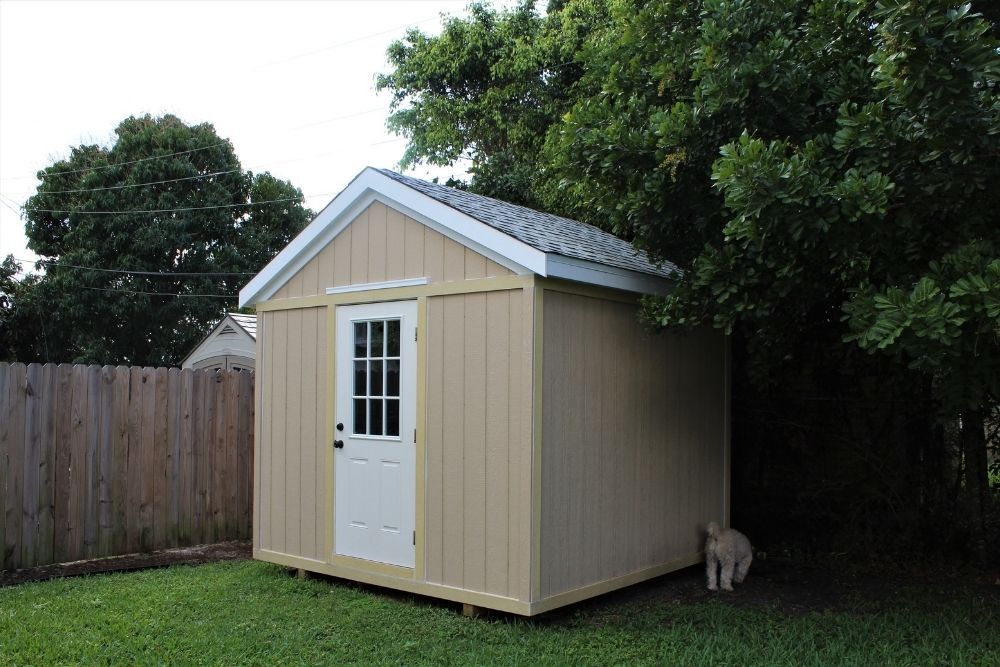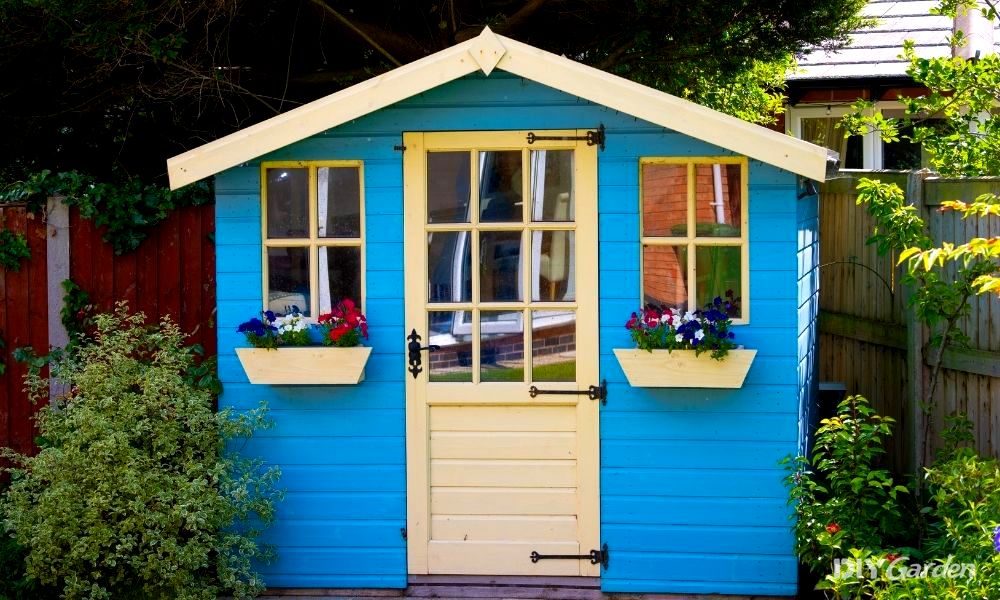
Sheds aren’t just for summer. With good insulation, a shed can be an all-year-round affair. This article explores the benefits of shed insulation and how to do it.
We’ll discuss the different insulation materials and the best picks for various shed types. And if you’re trying to insulate on a budget, we’ve got you covered, too.
Why Should I Insulate My Shed?
Insulation keeps the cold out in winter and the unbearable heat out in summer – it’s the gift that keeps on giving!
It does this by slowing the transfer of air in and out of your garden shed; it reduces hot air loss by removing air gaps. This also lessens the infiltration of stifling hot air in the summer.
So you can use your shed whenever you want – talk about better functionality! What’s more, insulation helps stave off dampness. You can have faith your gardening tools will be protected even in the worst UK weather.
Your shed will live a longer life if it’s insulated, too. It won’t suffer from black mould, and insects will stay outside, where they belong.
Prepping a Garden Shed For Insulation
Step 1: Identify Your Shed’s Purpose
When considering insulating your shed, the first step is identifying what you’ll be using your shed for. The insulation materials you choose and how you insulate will differ depending on the shed’s purpose.
Will your shed need noise-proofing because of your loud, heavy-duty tools? Are you thinking of working or sleeping in your shed? Do you plan to store expensive equipment inside?
Once you’ve had a think about that, it’s time to get to grips with R-values.
Step 2: Get to Grips With R-Values
“R-values” sounds too technical for simple shed insulation, I know. But it’s a term you’re sure to come across when buying your insulation.
R-values represent the extent to which each insulation material prevents heat transfer – that’s loss of heat out of your shed and prevention of heat entering. Insulation material with an R-value of 20 is 20 times better at preventing heat loss than with no insulation.
You can double up your insulation to double the R-value. 3-inch bubble wrap may have an R-value of 1. If you bought 6-inch bubble wrap, it’d have an R-value of 2.
Do some research on the correct R-value for your shed’s purpose – then you’ll know what to buy!
Step 3: Choose the Right Insulation
Choosing the right insulation goes hand in hand with understanding the R-value. Getting to grips with the R-value makes selecting the proper insulation a whole lot easier.
Choose an insulation material that matches your required R-value. Keep in mind whether you plan to insulate the roof, windows and doors as well as the walls and floor. If you want to protect your shed fully, you’ll need a good amount of insulation!
Next, let’s go through the best materials to use for different shed types.
Best Insulation for Sheds
Bubble wrap is cheap and works well for wooden sheds. It’s also easy to get hold of – you might even have some already lying around!
Therma-wrap insulation can be used for any shed type. It’s typically thicker than bubble wrap and is a better insulator overall.
Foam boards are strong and stable. They’re one of the best types of insulation for metal sheds! They’re straightforward to install, so cut the man-hours necessary to do the job.
Coming in at second place for metal sheds is spray foam. This is ideal for filling little gaps and drafty joins.
Like bubble wrap, fibreglass wool can only be used for wooden sheds. It’s the best insulator to use, but it comes at a price.
How to Insulate a Garden Shed
Now you’re prepped and ready to go, it’s time to get down to business. There are some must-have materials when insulating a shed. Let’s explore these next.
Essential Materials for Insulating a Garden Shed
To insulate your shed, you’ll need:
- Insulating material of your choice
- A dust sheet
- Scissors
- Nails
- Plywood/MDF
- A measuring tape
- Protective clothing (e.g. safety goggles)
- An adhesive
- Foam filler or mineral wool
- Old carpet
You’ll also need a hammer, hand saw and staple gun.
How to Insulate Shed Walls
If using bubble wrap, get your scissors and cut it into strips. You want these strips to fit your shed’s interior walls nicely. Then staple the bubble wrap to the walls using your staple gun.
Steer clear of the cladding here – you want to staple your bubble wrap to the frame. This will stop any annoying air gaps from forming.
Multi-layer insulation can be applied similarly. For metal or plastic sheds, cut the insulation material to size, then secure using an adhesive. Or, for wooden sheds, get out your staple gun.
For foam boards, measure the walls and cut your boards to match precisely. Then secure with an adhesive. Ensure you’re avoiding electricals and pipes.
Before installing fibreglass wool insulation, you need a breathable, damp-proof membrane. This will prevent moisture from building up. Then fit your insulation and press it down right into all those tiny gaps.
All insulation materials can be covered with MDF or plywood to avoid an ugly appearance.
How to Insulate a Shed Floor
Insulating your shed floor doesn’t take quite as much work. Phew! Just place a layer of breathable membrane and then add a carpet. You may have some left over from a previous house renovation. If not, check with builder friends or ask for off-cuts at the nearest carpet shop.
If shed carpet isn’t for you, you can go for the more expensive option of under-floor ventilation. But this is only viable if you have a 25mm gap under your shed or if your shed isn’t yet installed.
How to Insulate a Shed Roof
Insulating your shed roof isn’t vastly different from insulating the walls. Just keep your roof structure in mind. You’ll want a rigid insulation board then your insulation layer for flat roofs.
For any other type of roof, simply use mineral wool as a joist insulator and then your chosen insulation to cover it.
Insulating Shed Windows and Doors
To insulate shed windows and doors, apply a foam filler to the window edges and any visible gaps around the door frame. Alternatively, you can pack mineral wool into any gaps in the window frames.
If your shed door is really drafty, you could always consider replacing it with a house front door. They have double-glazed windows and are typically fireproof!
But the simplest way to keep the heat in is (wait for it!) to close the door! A draught excluder never hurt anyone, either.
Extra Shed Insulation Tips
Although insulating your shed’s walls, floor, roof, windows and doors should be plenty, here’s some extra tips to ensure your shed is insulated to the max.
Moisture Prevention
Moisture shouldn’t be an issue if you’ve followed the guide above and insulated correctly. But if you’re planning to use your garden shed as a working or living space, it’s worth taking extra preventative measures.
Protect the Outside
The outside of your shed will receive constant exposure to wind, rain, even some snow! To prevent moisture from seeping through, attach an ISO board, then cover it with waterproof cladding.
Attaching a breathable barrier to the outside isn’t a bad idea, either! But consider how it will weather the UK storms.
Block Water Vapour
Adding a vapour barrier also reduces moisture-intrusion. This can be added inside your shed or placed on the outside. Whatever takes your fancy!
A vapour barrier isn’t necessary but will act as an extra barricade, keeping damp and mould far away.
Consult a Professional
Installing shed insulation isn’t easy, but professional insulators spend hours with the stuff. If you need extra guidance, make use of their years of experience – consult a professional.
Insulating on a Budget
Fully insulating a shed can be expensive. But it doesn’t have to be. If you’re looking for a cheaper alternative, ditch the finesse. You can attach bubble wrap to your shed walls without hiding them away with MDF or plywood.
This will do the job. It won’t be as effective or neat, and it will likely need some repair in the following years, but it will still prevent some heat transfer.
Another option is to insulate some parts of your shed and not others. If your windows and door are particularly drafty, consider just insulating those. Or if your shed floor gets bitterly chilly, just add a layer of insulation there.
Ready at the Insulation Station?
Insulating your shed is important; it improves its functionality, prevents dampness and ensures your shed lives a long, healthy life. To prep your shed for insulation, consider why you want to do it, then take a stroll down R-value lane. Once you’ve chosen the right insulation, you’re well on your way!
There’s plenty of insulation materials to choose from. Use bubble wrap if you’re insulating your wooden shed on a budget or fibreglass wool if you want the best of the best. For metal sheds, select foam boards or spray foam. Choose therma-wrap if you want a versatile all-rounder.
All that’s left now is to insulate!
